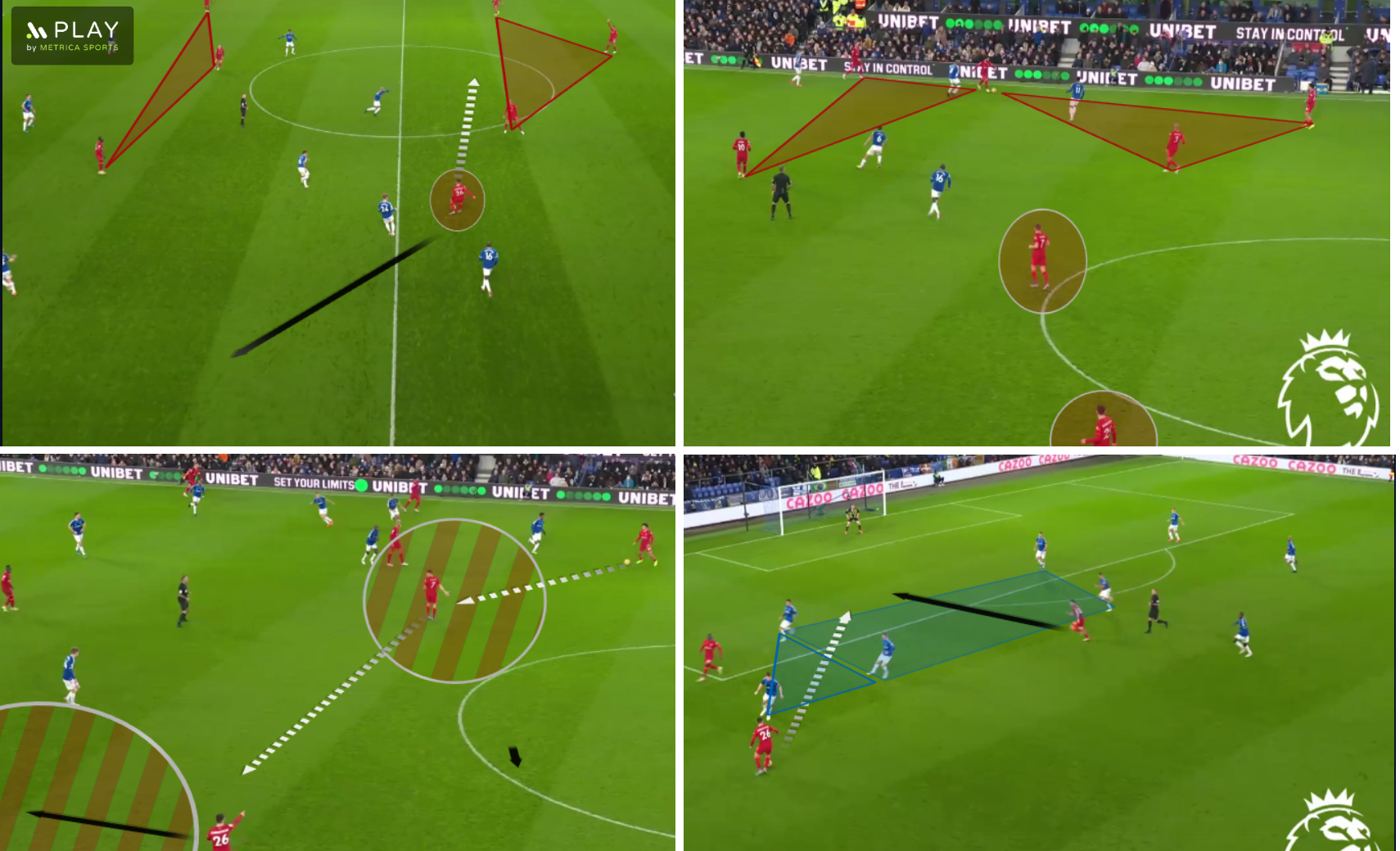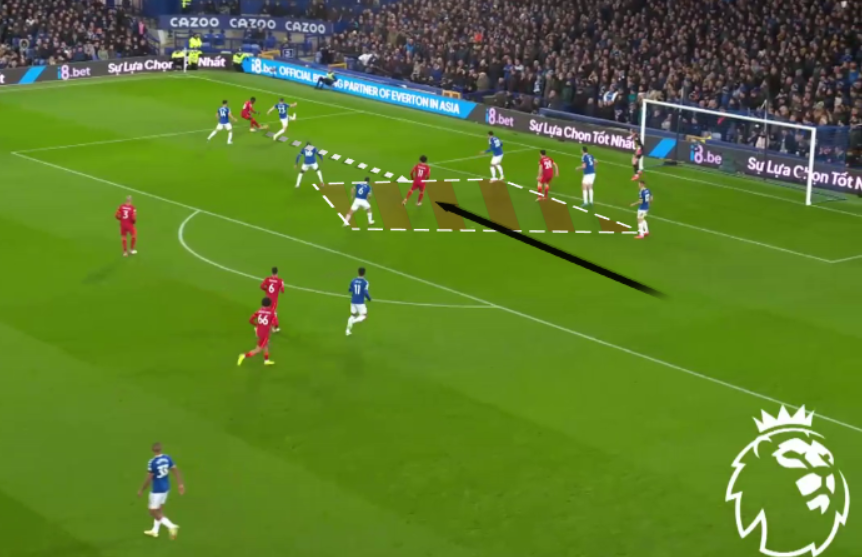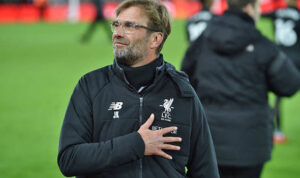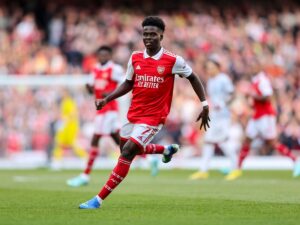Analysing the best attack in the world
Liverpool have scored 64 goals in 22 games this season and they don’t look like slowing down. After their next game, their next five, from now until the end of the season, you can update this number and will likely find the trend continues. With this analysis, I hope to shed some light on the reason why.
I previously wrote about the way Manchester City under Pep Guardiola found a formula to dominate and suffocate and force submission through possession and positional control; in terms of general defensive to offensive effectiveness, that team is the only one to justifiably compare with Liverpool. This is a different kind of football, the teams are not the same, but there is a good reason why those two teams alone have dominated the English football landscape for the past three to four years.
In that analysis I used one game to illustrate a tactical approach at its most obvious and most effective; here I will use a selection of open play positional and counter-attacking moves from two recent fixtures to focus more on the offensive patterns.
This isn’t a holistic review of the Liverpool team. You could focus on the way midfield, full back, or even centre back play heavily contributes to and helps facilitate Liverpool’s super-effective attacking game. Rather this will focus on how attacking moves develop, how players move, what they do, and, ultimately, how one of the game’s most difficult aspects – scoring goals – is apparently happening on Merseyside with unnatural regularity.
Triangles and quadrilaterals
Though football is a fluid, malleable, quick and ever-changing game, effective positional movements tend to be satisfyingly quite uniform. Geometry offers spaces to the players and ease of reference to the analyst.
The triangle is an old staple for drilling players in short passing moves; a truly effective four-man pressing unit often resembles a large and irregular convex quadrilateral; a four-man attacking unit often looks like a concave one. There is a good reason why analysts, coaches, and managers have been drawing shapes on still images of football pitches for decades in order to make their point.
For example, I can show you Diogo Jota’s sublime goal against Everton in full speed, in all its glory, like this:
We get the typical, unedited version of the football viewer’s experience this way. It’s fast and clinical, it gets to the point without any fuss. But if you are like me, you might be tempted to follow the ball a little too closely. The ball is the focal point.
But to understand what is happening – to, in a way, actually understand what is happening – we have to accept that player movements, positioning, who goes and who doesn’t, who asks for it, who is looking over his shoulder, who is pulling a marker, is really where the goal is scored.
When we watch the game at full speed, especially when we watch it live, it is almost impossible to do this. After all, who in their right mind is going to watch a football match and not watch the football itself?
This is where telestration (adding graphics to video, or in my case, images of video) comes in useful. We can view the same goal – or at least portions of it – through a series of images that tell the same story, only in greater detail. This way our eyes aren’t always, automatically, unavoidably drawn towards the ball; in fact, the ball is sometimes difficult to find. This way we can look at the bigger picture (so to speak). Like this:

Here we can see Robertson using the centre backs to switch play. We can see Liverpool’s two banks of three on the right flank with Salah the anchor point of both. We see Milner pulling into a vacant central playmaker’s space. We see Robertson advance down a vacant left flank. We see the spaces between Everton’s defensive unit. We see Diogo Jota target that space and Robertson exploit it. We see in much greater detail how the chance is created.
We can of course see all of this by repeated viewings of the video, but by slowing it all down and adding fancy graphics, we can do this in a more controlled, and I think educational way.
Possession and position
Liverpool ventured 27 open play attacking moves in their 4-1 win over Everton. A third of these resulted in a shot at goal. The first example I have best demonstrates what a positional attack actually is. This one is useful as it happens to cover all thirds of the pitch, from goalkeeper to forward.
It’s a smooth, slick, two-touch passing move that starts with Alisson in goal and sees the creative midfield pivot of Thiago and Fabinho provide ball progression and positional play from the defensive third to the attacking one. Thiago actually ends up inside the six-yard box when the shot is finally taken. We can take a closer look at what’s happening.

Thiago receives the first ball from Alisson as the centre backs split to prevent an effective press. Fabinho offers the simple but progressive forward passing lane into the middle third.
Trent Alexander-Arnold, operating here as an auxiliary right midfielder, sees the long pass route to Mané and times it to dissect the Everton midfield unit. Three quick passes – Thiago to Fabinho to Alexander-Arnold to Mané – has taken Liverpool from their own penalty area to the edge of their attacking third with, what looks like, apparent ease.
In truth, it’s about a level of confidence and understanding of one another that comes through tactical drilling and sustained success on the pitch. It looks easy, it makes Everton look really poor. But the reality is far less linear.

Mané is able to receive the ball on the half-turn and plays a quick one-two with Diogo – who has dropped off the defensive line (very Firmino-like). Both right and left flanks are vacant, Henderson has taken up position on the right, and prepares to move into the half space, Andrew Robertson is advancing through the left channel.
When Mané receives the ball back from Jota, he is in a pocket of space on the left side. A short exchange with Robertson lands Thiago with the ball and the magic man is suddenly in his element. He is beyond the opposition midfield, he has a multitude of options, and these options are finding spaces between markers. In this position, Everton are in trouble. If this was boxing, the blues would be on the ropes.

Another short, sharp passing move via Henderson and Thiago finds Alexander-Arnold free of any marker on his flank. Henderson begins to move beyond his marker, through the half space and into the penalty area.
Mohamed Salah, having received the ball with a quick short pass from the Liverpool right back, cuts inside and creates space away from his marker with his trademark quick feet, and his through ball on the outside of the Everton defensive line finds Henderson clear inside the box with three attackers supporting.
As it turned out, the cross was sound and the back post header from Mané was fine, but it didn’t have enough to beat Jordan Pickford. Not on this occasion. But the outcome was less relevant than the route towards it. In 30 seconds and 14 passes, Liverpool had covered the pitch, penetrated the opposition lines, and found a direct route to goal.
There was nothing particularly risky in the approach, it was measured and thoughtful and extremely effective. A great example of how passing and movement works to break down defensive and midfield lines.
Another, different kind of example of this, can be found towards the end of the 4-0 win over Southampton.
Here possession is won and the ball recovered by Konaté, and finds its way to van Dijk to reset the phase of play. This one is a bit more individually focused. Andrew Robertson – with the help of some smart interplay by Alex Oxlade-Chamberlain – progresses the ball himself with a lung-bursting sprint through the left channel.
He immediately breaches the midfield line and the defensive line is swarmed by the three man Liverpool attack. One defender moves out to try to engage Robertson in order to block the cross, two in the centre are outnumbered by the forwards.
The cross is accurate, Jota’s run is solid, but a fraction too late. A high-quality chance is created in the blink of an eye through aggression, sharp positional play, and breathtaking athleticism.
This one shows another aspect of aggression, this time not through running but through faster, more progressive passing and individual movements.
There is expert short passing from Robertson, a piece of brilliant manipulation of Mané’s body to lose his markers, and magnificent deep running and movement from Jota on show.
This particular move highlights Liverpool’s aggressive tendency to commit fully to their attacks. Likely a leading factor in why so many result in goals being scored. The concept of Andrew Robertson attacking the box like a goal-hungry forward played a big part in my player profile of the dynamic left-back.
For more of Andrew Robertson’s brilliantly effective direct input into Liverpool’s attacking game, you need just go back to the top of this page and look again at Jota’s goal against Everton. A hugely satisfying, almost exhibition-like piece of football.
For even more Robertson (and Mané) inspired attacking excellence, expert movement, generally brilliant football, we can refer to Liverpool’s first goal against Southampton.
In short, I suppose I’m trying to show you that Andrew Robertson is really really good at the offensive game.
I digress. To move back to our fancy, perhaps a little overdone graphical overlays, we can look at another chance carved out by Liverpool with expert simplicity against the hapless, helpless Everton midfield and defensive units.

This time, it’s Joël Matip who wins possession and Fabinho who recovers the ball. There is an overload on the Liverpool right and this pulls the Everton line across towards that side. Sadio Mané is then able to find space wide of the Everton full-back on the far side.
Fabinho faces a man blocking his route into the vacant half space, but with Thiago and Salah (out of picture) peeled wide, he has a pretty clear and simple way through.

A one-two exchange with Salah sets Fabinho into that space, beyond the midfield line, and inside of the man previously blocking his path. The Everton defensive line, now effectively a three-man unit, is covering the central channel with Mané in the left side space he found earlier.
Fabinho plays a confident, almost arrogant curling long ball beyond the widest of the defenders into Mané’s feet. Meanwhile, Mohamed Salah, having set Fabinho away, begins his inevitable trademark movement from wide to inside. There is a (quite ominous) space developing within the penalty area between Everton’s midfield and defensive lines.

Mané dwells on the ball just enough to pull his blockers out of the way of that passing lane and to allow Salah to take up position in the centre of that now quite gaping hole in a key scoring area. Salah receives the ball, hits it low and hard, Pickford makes a terrific save.
It’s another simple, fast, super-effective move. There is nothing particularly complicated going on. It’s great movement, confident technical football, and an excellent level of positional understanding between teammates who know each other’s game inside out.
Here it is in real-time:
Counter press and counter attack
Liverpool are no longer the Gegenpressing side of a few years ago. These days almost every team they face is too afraid of them to give them the opportunity to counter-press. But that doesn’t mean they aren’t still really good at doing it when the opportunity does present itself.
For a very simple, quick demonstration of this, we can look at an early chance Mohamed Salah had against Everton.
Hilarious that as Peter Drury and co-commentator Jim Beglin are describing Everton being able to “breathe” and have “a modicum of control” after winning possession during a relentless display of attacking ruthlessness from Liverpool at the start of the game, Diogo Jota anticipates a relatively safe short pass into the full back, intercepts, and plays a great cross into Salah who is taking up a centre forward’s position just in case something like that happens. He misses the shot, he makes a bit of a mess of it, but it’s a big chance created through nothing but sheer gall and anticipation.
Jota wasn’t anywhere near the club when Liverpool were Gegenpressing their way through Europe, but here he is showing us that he can counter-press with the best of them.
Examples of the counter-attack can be found in both fixtures, but I’ll focus on one particularly interesting one from the game against Southampton.

The ball is turned over in a dangerous area and Southampton gain ground on their right flank. Only Andrew Robertson (as well as a likely offside flag) stand between a simple through pass and a Southampton 1 v 1. Robertson uses every ounce of his experience and defensive technique to set his body shape and prime himself to cover both passing lanes without committing to a challenge. A very difficult skill to execute for your average full back.
Robertson isn’t your average full back. He intercepts the ball and wins possession. The Liverpool midfield is immediately primed to receive the ball in space and advance. Mané is supporting Robertson, Henderson and Jota are moving up into the attacking midfield, Salah is motoring ahead out of picture into the offensive third.

Mané dummies the ball and leaves it to Thiago. And his effortless, buttery smooth long ball finds the chest of Salah with a level of ease that can only be described as unfair. Salah has space ahead and the pace and skill to exploit it.

The Egyptian takes his defender for a ride down the outside, delaying and allowing for support to arrive. He then cuts inside – Salah loves to cut inside – and plays that same through ball to Jordan Henderson we saw against Everton, only this time the Liverpool captain arrives on the outside.
Same kind of deal, same extremely effective use of advanced spaces. There’s a ton of committed running and athleticism on show here; in order to have support, you have to expect your teammates to do the running. There is never really a shortage of committed running at Liverpool. Especially not from Jordan Henderson.
Another example of a Liverpool counter attack, a much simpler, likely more memorable one, took place late in the first half. A cut-and-dry corner kick that ends up more dangerous for the team taking it than the one defending it.
There are a bunch of these kinds of simpler counter-attacking moves broken down in a video I once made that you can find HERE.
Then there is Mohamed Salah’s first goal against Everton.
This one exploits an over-commitment from the opposition and utilises superb individual passing, running, and finishing. It looks really easy. It definitely isn’t. There are a lot of moving parts in a goal like this. It isn’t as intricate as some of the moves I broke down in greater detail, but it is no less complex in its execution.
We see more of that measured aggression from Liverpool – whether at the back or at the top, they always commit – and we see more great work on an individual level. Both Henderson’s pass and Salah’s finish are from the very top level.
When it all comes together…
Liverpool have a formula. That’s what great coaching gets you. When a talented, driven, intelligent head coach is allowed to recruit his staff, sculpt his squad, retain his best players, and move steadily toward a philosophy that is drilled, understood and eventually totally adopted and absorbed by his team, you get the kind of offensive fluidity we’re seeing from Liverpool this season.
This is repeatable, it’s sustainable, it’s frankly ridiculous. This is no purple patch. The finishing touch won’t always be there (it wasn’t there in a recent last gasp 1-o win over Wolves), but there is a good chance that the opportunities will be.
Liverpool have developed a system that mixes intelligent movement, expert technique, symbiotic understanding, selfless commitment and endless energy and athleticism that lends itself so perfectly well to successful, exciting, high scoring football.
This was only two games. I could have used one of them, to be honest, and the point would have been sufficiently illustrated. It’s important to understand that Liverpool are scoring at an unbelievable rate.
You can use the two games I focused on or you can take a choice of your own. There have been very few games where Liverpool struggled to open up advanced spaces and perform – at worst well, at best brilliantly – one of the game’s most difficult aspects: finding the net.
I don’t expect them to stop any time soon. They don’t even look like slowing down.


